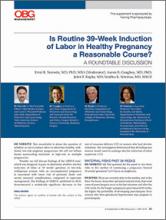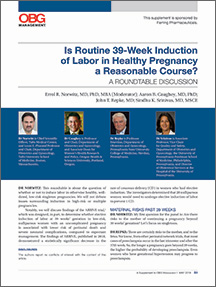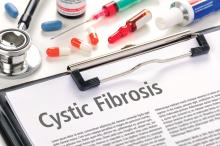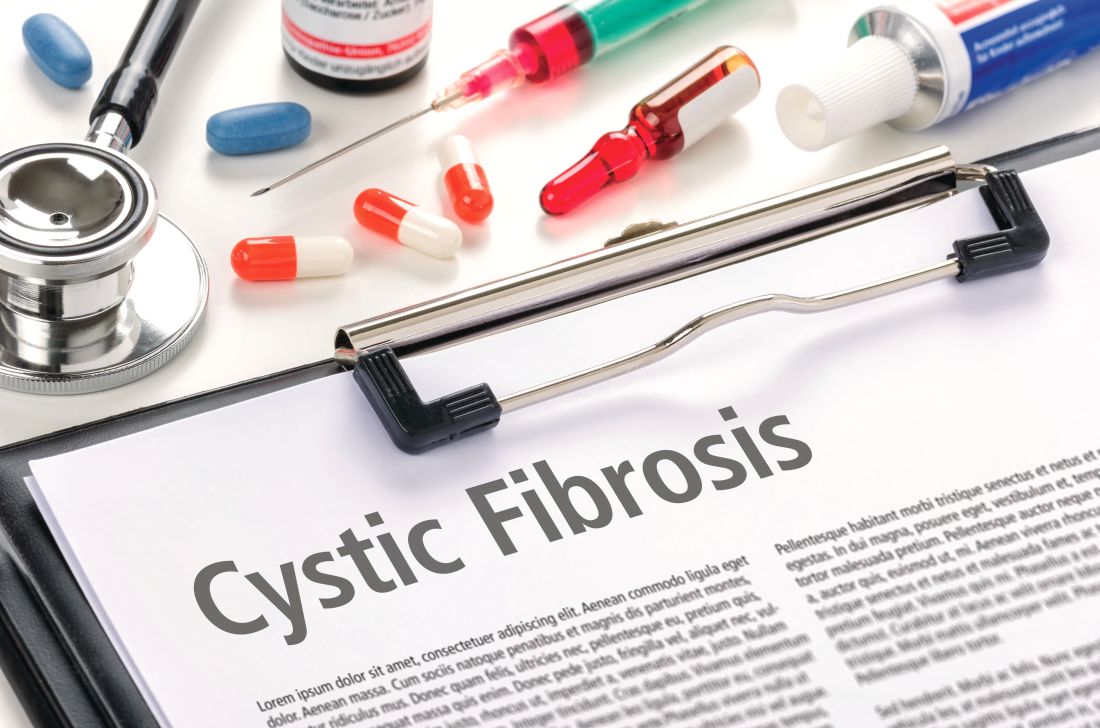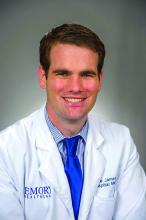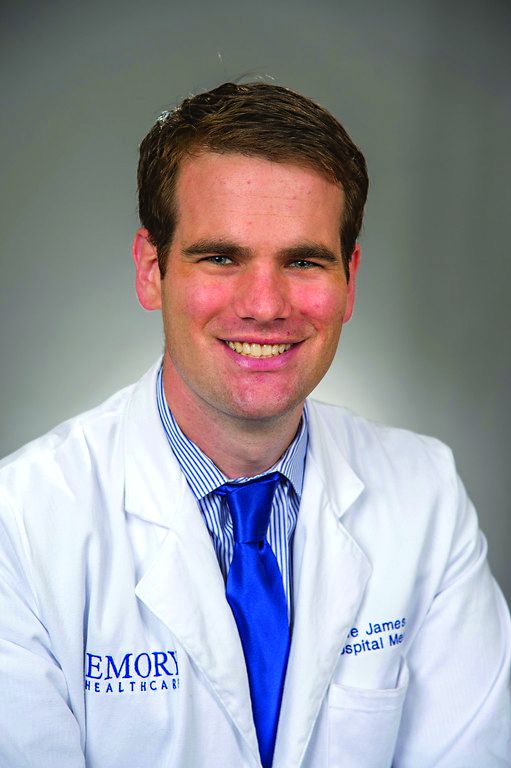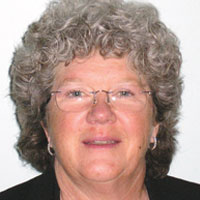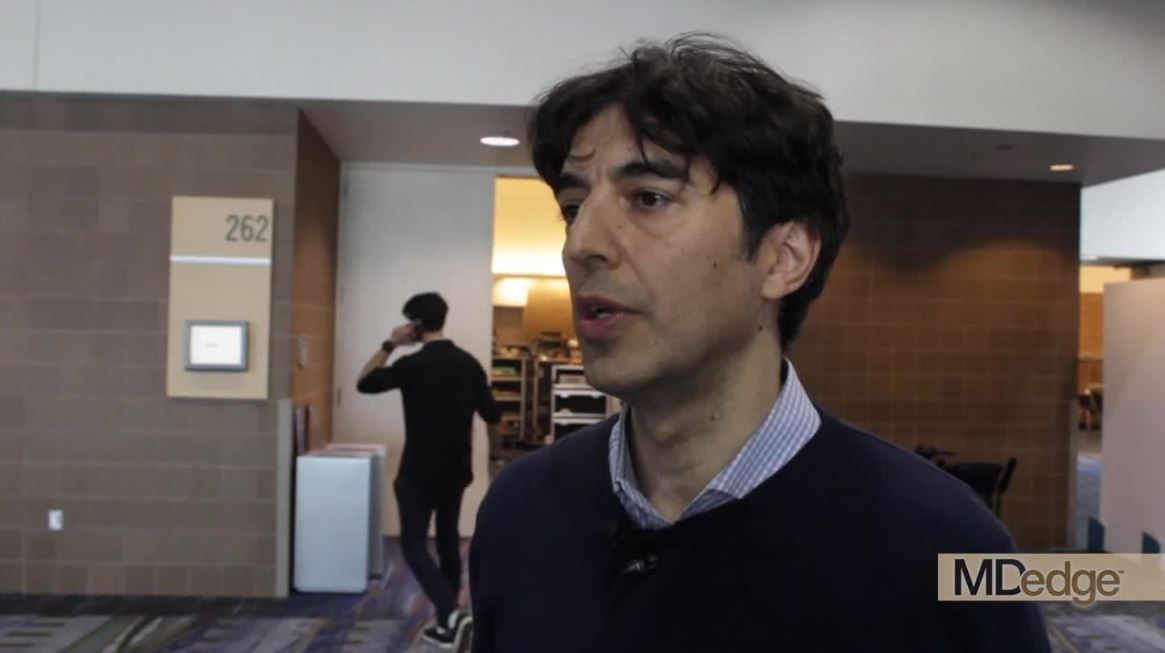User login
Study finds higher than expected rates of hemophilia in Indiana
The state of Indiana had higher hemophilia incidence and prevalence rates, compared with national estimates, according to results from a statewide epidemiologic analysis.
“[The study] aimed to identify all persons with hemophilia, including those not served by an hemophilia treatment center, who resided in Indiana,” Amanda I. Okolo, MPH, of the Indiana Hemophilia and Thrombosis Center, Indianapolis, and her colleagues wrote in Haemophilia.
The researchers retrospectively reviewed medical chart data from federally identified hemophilia treatment centers in Indiana during 2011-2013. Various data sources were used to find hemophilia cases, including administrative claims, clinic reports, and hospital records. The team estimated incidence and prevalence rates using both confirmed and possible cases of hemophilia. With respect to incidence, the calculation was based on the 10 years leading up to the study surveillance period.
“During the study period, 599, 623, and 634 male cases of hemophilia were identified in 2011, 2012 and 2013, respectively, with a total of 704 unique male cases,” the researchers wrote. Among these cases, 35.2% had factor IX deficiency and 64.8% had factor VIII deficiency.
Health care utilization was high among this group of patients, with more than 80% of cases seen at a hemophilia treatment center at least once during the 3-year study period.
The age-adjusted prevalence rate for hemophilia in 2013 was 19.4 cases per 100,000 males. The mean incidence rate over the 10 years leading up to the study period was 30.1 per 100,000, or 1 per 3,688 live male births, noticeably higher than the generally accepted national frequency of hemophilia at about 1 per 5,000 live male births.
“The estimated hemophilia prevalence in Indiana was 45% higher than previously reported in the United States,” the researchers added.
The higher prevalence could be partly caused by improvements in hemophilia care, namely increased adoption of prophylaxis. But a more important factor may be the reduction in HIV infections and the decreasing mortality from HIV among hemophilia patients.
The researchers acknowledged a key limitation of the study was the lack of data on patients assessed in other clinical settings. As a result, the reported rates could be an underestimation.
“Our results may be relevant to other countries where the hemophilia treatment center model is utilized,” they wrote.
No funding sources were reported. The authors reported having no conflicts of interest.
SOURCE: Okolo AI et al. Haemophilia. 2019 Mar 29. doi: 10.1111/hae.13734.
The state of Indiana had higher hemophilia incidence and prevalence rates, compared with national estimates, according to results from a statewide epidemiologic analysis.
“[The study] aimed to identify all persons with hemophilia, including those not served by an hemophilia treatment center, who resided in Indiana,” Amanda I. Okolo, MPH, of the Indiana Hemophilia and Thrombosis Center, Indianapolis, and her colleagues wrote in Haemophilia.
The researchers retrospectively reviewed medical chart data from federally identified hemophilia treatment centers in Indiana during 2011-2013. Various data sources were used to find hemophilia cases, including administrative claims, clinic reports, and hospital records. The team estimated incidence and prevalence rates using both confirmed and possible cases of hemophilia. With respect to incidence, the calculation was based on the 10 years leading up to the study surveillance period.
“During the study period, 599, 623, and 634 male cases of hemophilia were identified in 2011, 2012 and 2013, respectively, with a total of 704 unique male cases,” the researchers wrote. Among these cases, 35.2% had factor IX deficiency and 64.8% had factor VIII deficiency.
Health care utilization was high among this group of patients, with more than 80% of cases seen at a hemophilia treatment center at least once during the 3-year study period.
The age-adjusted prevalence rate for hemophilia in 2013 was 19.4 cases per 100,000 males. The mean incidence rate over the 10 years leading up to the study period was 30.1 per 100,000, or 1 per 3,688 live male births, noticeably higher than the generally accepted national frequency of hemophilia at about 1 per 5,000 live male births.
“The estimated hemophilia prevalence in Indiana was 45% higher than previously reported in the United States,” the researchers added.
The higher prevalence could be partly caused by improvements in hemophilia care, namely increased adoption of prophylaxis. But a more important factor may be the reduction in HIV infections and the decreasing mortality from HIV among hemophilia patients.
The researchers acknowledged a key limitation of the study was the lack of data on patients assessed in other clinical settings. As a result, the reported rates could be an underestimation.
“Our results may be relevant to other countries where the hemophilia treatment center model is utilized,” they wrote.
No funding sources were reported. The authors reported having no conflicts of interest.
SOURCE: Okolo AI et al. Haemophilia. 2019 Mar 29. doi: 10.1111/hae.13734.
The state of Indiana had higher hemophilia incidence and prevalence rates, compared with national estimates, according to results from a statewide epidemiologic analysis.
“[The study] aimed to identify all persons with hemophilia, including those not served by an hemophilia treatment center, who resided in Indiana,” Amanda I. Okolo, MPH, of the Indiana Hemophilia and Thrombosis Center, Indianapolis, and her colleagues wrote in Haemophilia.
The researchers retrospectively reviewed medical chart data from federally identified hemophilia treatment centers in Indiana during 2011-2013. Various data sources were used to find hemophilia cases, including administrative claims, clinic reports, and hospital records. The team estimated incidence and prevalence rates using both confirmed and possible cases of hemophilia. With respect to incidence, the calculation was based on the 10 years leading up to the study surveillance period.
“During the study period, 599, 623, and 634 male cases of hemophilia were identified in 2011, 2012 and 2013, respectively, with a total of 704 unique male cases,” the researchers wrote. Among these cases, 35.2% had factor IX deficiency and 64.8% had factor VIII deficiency.
Health care utilization was high among this group of patients, with more than 80% of cases seen at a hemophilia treatment center at least once during the 3-year study period.
The age-adjusted prevalence rate for hemophilia in 2013 was 19.4 cases per 100,000 males. The mean incidence rate over the 10 years leading up to the study period was 30.1 per 100,000, or 1 per 3,688 live male births, noticeably higher than the generally accepted national frequency of hemophilia at about 1 per 5,000 live male births.
“The estimated hemophilia prevalence in Indiana was 45% higher than previously reported in the United States,” the researchers added.
The higher prevalence could be partly caused by improvements in hemophilia care, namely increased adoption of prophylaxis. But a more important factor may be the reduction in HIV infections and the decreasing mortality from HIV among hemophilia patients.
The researchers acknowledged a key limitation of the study was the lack of data on patients assessed in other clinical settings. As a result, the reported rates could be an underestimation.
“Our results may be relevant to other countries where the hemophilia treatment center model is utilized,” they wrote.
No funding sources were reported. The authors reported having no conflicts of interest.
SOURCE: Okolo AI et al. Haemophilia. 2019 Mar 29. doi: 10.1111/hae.13734.
FROM HAEMOPHILIA
Is Routine 39-Week Induction of Labor in Healthy Pregnancy a Reasonable Course?
In this supplement to OBG Management a panel of experts discuss the risks and benefits of routine induction of labor (IOL) at 39 weeks. The panelists examine the findings from the ARRIVE trial and the potential impact on real-world practice. The experts also describe their own approach to IOL at 39 weeks and what they see for the future.
Panelists
- Errol R. Norwitz, MD, PhD, MBA (Moderator)
- Aaron B. Caughey, MD, PhD
- John T. Repke, MD
- Sindhu K. Srinivas, MD, MSCE
In this supplement to OBG Management a panel of experts discuss the risks and benefits of routine induction of labor (IOL) at 39 weeks. The panelists examine the findings from the ARRIVE trial and the potential impact on real-world practice. The experts also describe their own approach to IOL at 39 weeks and what they see for the future.
Panelists
- Errol R. Norwitz, MD, PhD, MBA (Moderator)
- Aaron B. Caughey, MD, PhD
- John T. Repke, MD
- Sindhu K. Srinivas, MD, MSCE
In this supplement to OBG Management a panel of experts discuss the risks and benefits of routine induction of labor (IOL) at 39 weeks. The panelists examine the findings from the ARRIVE trial and the potential impact on real-world practice. The experts also describe their own approach to IOL at 39 weeks and what they see for the future.
Panelists
- Errol R. Norwitz, MD, PhD, MBA (Moderator)
- Aaron B. Caughey, MD, PhD
- John T. Repke, MD
- Sindhu K. Srinivas, MD, MSCE
Mucus buildup precedes lung damage in children with CF
according to a cross-sectional cohort study.
It has been difficult for researchers to pinpoint the mechanisms that initiate lung disease in people with CF, because it is challenging to study young people with the disease and “CF animal models often fail to recapitulate aspects of human CF disease and yield disparate findings,” wrote Charles R. Esther Jr., MD, of the division of pediatric pulmonology at the University of North Carolina at Chapel Hill and his colleagues in Science Translational Medicine.
The researchers studied 46 clinically stable young children (aged 3.3 years, plus or minus 1.7 years) with CF and 16 age-matched controls who did not have CF, but had respiratory symptoms (aged 3.2 years, plus or minus 2.0 years) using chest CT imaging and bronchoalveolar lavage fluid. BALF samples in CF patients were collected over 62 study visits and subsequently cultured for detection and quantification of pathogens. The children with CF were enrolled in the Australian Respiratory Early Surveillance Team for Cystic Fibrosis (AREST CF) program.
“We analyzed the relationships between airway mucus, inflammation, and bacterial culture/microbiome,” the researchers wrote.
BALF total mucin levels were higher in CF samples versus non-CF controls. In addition, Dr. Esther and his colleagues found that these results were the same regardless of infection status and that increased densities of mucus flakes were also seen in samples from the CF patients. “Elevated total mucin concentrations and inflammatory markers were observed in children with CF despite a low incidence of pathogens identified by culture or molecular microbiology. This muco-inflammatory state also characterized our CF population with the earliest lung disease [without substantial CT-defined structural changes] in the setting of little or no pathogen infection,” they wrote.
Based on the findings, the investigators postulated that the airways of children with CF may show distinct defects in the clearance of recently created mucins, which could contribute to early CF lung disease.
A key limitation of the study was the prophylactic use of intermittent antibiotics. As a result, bacterial infection could have contributed to the development of early CF lung disease.
“Agents designed to remove permanent mucus covering airway surfaces of young children with CF appear to be rational strategies to prevent bacterial infection and disease progression,” they concluded.
The study was supported by the National Heart, Lung, and Blood Institute; the North Carolina Translational and Clinical Sciences Institute; the National Health and Medical Research Council; and the Cystic Fibrosis Foundation. Two coauthors reported financial affiliations with Parion Sciences.
SOURCE: Esther CR et al. Sci Transl Med. 2019 Apr 3. doi: 10.1126/scitranslmed.aav3488.
according to a cross-sectional cohort study.
It has been difficult for researchers to pinpoint the mechanisms that initiate lung disease in people with CF, because it is challenging to study young people with the disease and “CF animal models often fail to recapitulate aspects of human CF disease and yield disparate findings,” wrote Charles R. Esther Jr., MD, of the division of pediatric pulmonology at the University of North Carolina at Chapel Hill and his colleagues in Science Translational Medicine.
The researchers studied 46 clinically stable young children (aged 3.3 years, plus or minus 1.7 years) with CF and 16 age-matched controls who did not have CF, but had respiratory symptoms (aged 3.2 years, plus or minus 2.0 years) using chest CT imaging and bronchoalveolar lavage fluid. BALF samples in CF patients were collected over 62 study visits and subsequently cultured for detection and quantification of pathogens. The children with CF were enrolled in the Australian Respiratory Early Surveillance Team for Cystic Fibrosis (AREST CF) program.
“We analyzed the relationships between airway mucus, inflammation, and bacterial culture/microbiome,” the researchers wrote.
BALF total mucin levels were higher in CF samples versus non-CF controls. In addition, Dr. Esther and his colleagues found that these results were the same regardless of infection status and that increased densities of mucus flakes were also seen in samples from the CF patients. “Elevated total mucin concentrations and inflammatory markers were observed in children with CF despite a low incidence of pathogens identified by culture or molecular microbiology. This muco-inflammatory state also characterized our CF population with the earliest lung disease [without substantial CT-defined structural changes] in the setting of little or no pathogen infection,” they wrote.
Based on the findings, the investigators postulated that the airways of children with CF may show distinct defects in the clearance of recently created mucins, which could contribute to early CF lung disease.
A key limitation of the study was the prophylactic use of intermittent antibiotics. As a result, bacterial infection could have contributed to the development of early CF lung disease.
“Agents designed to remove permanent mucus covering airway surfaces of young children with CF appear to be rational strategies to prevent bacterial infection and disease progression,” they concluded.
The study was supported by the National Heart, Lung, and Blood Institute; the North Carolina Translational and Clinical Sciences Institute; the National Health and Medical Research Council; and the Cystic Fibrosis Foundation. Two coauthors reported financial affiliations with Parion Sciences.
SOURCE: Esther CR et al. Sci Transl Med. 2019 Apr 3. doi: 10.1126/scitranslmed.aav3488.
according to a cross-sectional cohort study.
It has been difficult for researchers to pinpoint the mechanisms that initiate lung disease in people with CF, because it is challenging to study young people with the disease and “CF animal models often fail to recapitulate aspects of human CF disease and yield disparate findings,” wrote Charles R. Esther Jr., MD, of the division of pediatric pulmonology at the University of North Carolina at Chapel Hill and his colleagues in Science Translational Medicine.
The researchers studied 46 clinically stable young children (aged 3.3 years, plus or minus 1.7 years) with CF and 16 age-matched controls who did not have CF, but had respiratory symptoms (aged 3.2 years, plus or minus 2.0 years) using chest CT imaging and bronchoalveolar lavage fluid. BALF samples in CF patients were collected over 62 study visits and subsequently cultured for detection and quantification of pathogens. The children with CF were enrolled in the Australian Respiratory Early Surveillance Team for Cystic Fibrosis (AREST CF) program.
“We analyzed the relationships between airway mucus, inflammation, and bacterial culture/microbiome,” the researchers wrote.
BALF total mucin levels were higher in CF samples versus non-CF controls. In addition, Dr. Esther and his colleagues found that these results were the same regardless of infection status and that increased densities of mucus flakes were also seen in samples from the CF patients. “Elevated total mucin concentrations and inflammatory markers were observed in children with CF despite a low incidence of pathogens identified by culture or molecular microbiology. This muco-inflammatory state also characterized our CF population with the earliest lung disease [without substantial CT-defined structural changes] in the setting of little or no pathogen infection,” they wrote.
Based on the findings, the investigators postulated that the airways of children with CF may show distinct defects in the clearance of recently created mucins, which could contribute to early CF lung disease.
A key limitation of the study was the prophylactic use of intermittent antibiotics. As a result, bacterial infection could have contributed to the development of early CF lung disease.
“Agents designed to remove permanent mucus covering airway surfaces of young children with CF appear to be rational strategies to prevent bacterial infection and disease progression,” they concluded.
The study was supported by the National Heart, Lung, and Blood Institute; the North Carolina Translational and Clinical Sciences Institute; the National Health and Medical Research Council; and the Cystic Fibrosis Foundation. Two coauthors reported financial affiliations with Parion Sciences.
SOURCE: Esther CR et al. Sci Transl Med. 2019 Apr 3. doi: 10.1126/scitranslmed.aav3488.
FROM SCIENCE TRANSLATIONAL MEDICINE
Sodium bicarbonate decreases death and organ failure in patients with severe AKI
Clinical question: Does sodium bicarbonate treatment improve clinical outcomes in critically ill patients with severe metabolic acidosis?
Background: Severe acidemia is associated with impaired cardiac function, decreased perfusion, and increased mortality. Many physicians use sodium bicarbonate to improve hemodynamic stability in critically ill patients with acidemia. However, the use of sodium bicarbonate in this role remains controversial because the evidence to support it is limited.
Study design: Multicenter, open-label, randomized, controlled trial.
Setting: Twenty-six ICUs in France.
Synopsis: Investigators randomized 389 adult patients with severe acidemia and Sequential Organ Failure Assessment (SOFA) scores of 4 or greater or serum lactate level of 2 mmol/L or greater to receive either no sodium bicarbonate or 4.2% intravenous sodium bicarbonate. The primary composite outcome was at least organ failure at day 7 or mortality by day 28.
When compared as a whole, the treatment group did not demonstrate improvement in the primary outcome. However, patients with Acute Kidney Injury Network scores of 2 or 3 at enrollment who received bicarbonate had lower rates of the composite primary outcome (70% vs. 82%; P = .462). Additionally, 35% of the treatment group utilized a renal replacement therapy (RRT) during their ICU stay versus 52% of the control group (P = .0009).
Limitations of the study included unblinding of the ICU physicians and the lack of a control intravenous solution. Notably, 47 of the 194 patients in the control group received sodium bicarbonate as salvage therapy.
Bottom line: Sodium bicarbonate treatment may decrease the need for RRT in patients with significant metabolic acidemia and may decrease the likelihood of death or organ failure in those with severe acute kidney injury.
Citation: Jaber S et al. Sodium bicarbonate therapy for patients with severe metabolic acidaemia in the intensive care unit (BICAR-ICU): A multicentre, open-label, randomised controlled, phase 3 trial. Lancet. 2018;392(10141):31-40.
Dr. James is a hospitalist at Emory University Hospital Midtown and an assistant professor at Emory University, both in Atlanta
Clinical question: Does sodium bicarbonate treatment improve clinical outcomes in critically ill patients with severe metabolic acidosis?
Background: Severe acidemia is associated with impaired cardiac function, decreased perfusion, and increased mortality. Many physicians use sodium bicarbonate to improve hemodynamic stability in critically ill patients with acidemia. However, the use of sodium bicarbonate in this role remains controversial because the evidence to support it is limited.
Study design: Multicenter, open-label, randomized, controlled trial.
Setting: Twenty-six ICUs in France.
Synopsis: Investigators randomized 389 adult patients with severe acidemia and Sequential Organ Failure Assessment (SOFA) scores of 4 or greater or serum lactate level of 2 mmol/L or greater to receive either no sodium bicarbonate or 4.2% intravenous sodium bicarbonate. The primary composite outcome was at least organ failure at day 7 or mortality by day 28.
When compared as a whole, the treatment group did not demonstrate improvement in the primary outcome. However, patients with Acute Kidney Injury Network scores of 2 or 3 at enrollment who received bicarbonate had lower rates of the composite primary outcome (70% vs. 82%; P = .462). Additionally, 35% of the treatment group utilized a renal replacement therapy (RRT) during their ICU stay versus 52% of the control group (P = .0009).
Limitations of the study included unblinding of the ICU physicians and the lack of a control intravenous solution. Notably, 47 of the 194 patients in the control group received sodium bicarbonate as salvage therapy.
Bottom line: Sodium bicarbonate treatment may decrease the need for RRT in patients with significant metabolic acidemia and may decrease the likelihood of death or organ failure in those with severe acute kidney injury.
Citation: Jaber S et al. Sodium bicarbonate therapy for patients with severe metabolic acidaemia in the intensive care unit (BICAR-ICU): A multicentre, open-label, randomised controlled, phase 3 trial. Lancet. 2018;392(10141):31-40.
Dr. James is a hospitalist at Emory University Hospital Midtown and an assistant professor at Emory University, both in Atlanta
Clinical question: Does sodium bicarbonate treatment improve clinical outcomes in critically ill patients with severe metabolic acidosis?
Background: Severe acidemia is associated with impaired cardiac function, decreased perfusion, and increased mortality. Many physicians use sodium bicarbonate to improve hemodynamic stability in critically ill patients with acidemia. However, the use of sodium bicarbonate in this role remains controversial because the evidence to support it is limited.
Study design: Multicenter, open-label, randomized, controlled trial.
Setting: Twenty-six ICUs in France.
Synopsis: Investigators randomized 389 adult patients with severe acidemia and Sequential Organ Failure Assessment (SOFA) scores of 4 or greater or serum lactate level of 2 mmol/L or greater to receive either no sodium bicarbonate or 4.2% intravenous sodium bicarbonate. The primary composite outcome was at least organ failure at day 7 or mortality by day 28.
When compared as a whole, the treatment group did not demonstrate improvement in the primary outcome. However, patients with Acute Kidney Injury Network scores of 2 or 3 at enrollment who received bicarbonate had lower rates of the composite primary outcome (70% vs. 82%; P = .462). Additionally, 35% of the treatment group utilized a renal replacement therapy (RRT) during their ICU stay versus 52% of the control group (P = .0009).
Limitations of the study included unblinding of the ICU physicians and the lack of a control intravenous solution. Notably, 47 of the 194 patients in the control group received sodium bicarbonate as salvage therapy.
Bottom line: Sodium bicarbonate treatment may decrease the need for RRT in patients with significant metabolic acidemia and may decrease the likelihood of death or organ failure in those with severe acute kidney injury.
Citation: Jaber S et al. Sodium bicarbonate therapy for patients with severe metabolic acidaemia in the intensive care unit (BICAR-ICU): A multicentre, open-label, randomised controlled, phase 3 trial. Lancet. 2018;392(10141):31-40.
Dr. James is a hospitalist at Emory University Hospital Midtown and an assistant professor at Emory University, both in Atlanta
Geroscience brings bench science to the real-world problems of aging
NEW ORLEANS – Patients ask their doctors whether dietary manipulation can extend lifespan and promote healthy aging. Right now, basic scientists and clinicians from many disciplines are teaming up under the broad umbrella of the field of geroscience to try to answer these and other concerns relevant to an aging population.
“The idea here is that, instead of going after each disease one at a time, as we do ... [we] instead go after disease vulnerability – and this is something that is shared, as a function of age,” Rozalyn Anderson, PhD, said of this new discipline. The work touches on disparate diseases such as cancer, dementia, and diabetes, she pointed out during a video interview at the annual meeting of the Endocrine Society.
“I separate these things out into ‘front-end’ and ‘back-end,’ work,” said Dr. Anderson of the University of Wisconsin-Madison’s aging and caloric restriction program. She explained that the caloric restriction she researches is back-end work to support the rapidly evolving field of nutritional modulation of aging.
When the basic science builds the framework, physicians and scientists can turn to front-end research, looking at humans to see which dietary manipulations are effective – and which are achievable.
“Take a paradigm that works, and then try to understand how it works,” said Dr. Anderson. “So [for example], we have this paradigm, and it’s tremendously effective in rodents. It’s effective in flies, in worms, in yeast, in spiders, in dogs – and in nonhuman primates.” Then, she and her team try to pull out clues “about the biology of aging itself, and what creates disease vulnerability as a function of age,” she said.
“The most important thing of all is that we can modify aging. This is not a foregone conclusion – no one would have believed it. But even in a primate species, we can change how they age. And the way in which we change is through nutrition.”
Dr Anderson added that “the paradigm of caloric restriction is tremendously effective, but [in reality], people are not going to do it.” It’s simply not practical to ask individuals to restrict calories by 30% or more over a lifespan, so “.”
Dr. Anderson reported no relevant conflicts of interest or disclosures.
NEW ORLEANS – Patients ask their doctors whether dietary manipulation can extend lifespan and promote healthy aging. Right now, basic scientists and clinicians from many disciplines are teaming up under the broad umbrella of the field of geroscience to try to answer these and other concerns relevant to an aging population.
“The idea here is that, instead of going after each disease one at a time, as we do ... [we] instead go after disease vulnerability – and this is something that is shared, as a function of age,” Rozalyn Anderson, PhD, said of this new discipline. The work touches on disparate diseases such as cancer, dementia, and diabetes, she pointed out during a video interview at the annual meeting of the Endocrine Society.
“I separate these things out into ‘front-end’ and ‘back-end,’ work,” said Dr. Anderson of the University of Wisconsin-Madison’s aging and caloric restriction program. She explained that the caloric restriction she researches is back-end work to support the rapidly evolving field of nutritional modulation of aging.
When the basic science builds the framework, physicians and scientists can turn to front-end research, looking at humans to see which dietary manipulations are effective – and which are achievable.
“Take a paradigm that works, and then try to understand how it works,” said Dr. Anderson. “So [for example], we have this paradigm, and it’s tremendously effective in rodents. It’s effective in flies, in worms, in yeast, in spiders, in dogs – and in nonhuman primates.” Then, she and her team try to pull out clues “about the biology of aging itself, and what creates disease vulnerability as a function of age,” she said.
“The most important thing of all is that we can modify aging. This is not a foregone conclusion – no one would have believed it. But even in a primate species, we can change how they age. And the way in which we change is through nutrition.”
Dr Anderson added that “the paradigm of caloric restriction is tremendously effective, but [in reality], people are not going to do it.” It’s simply not practical to ask individuals to restrict calories by 30% or more over a lifespan, so “.”
Dr. Anderson reported no relevant conflicts of interest or disclosures.
NEW ORLEANS – Patients ask their doctors whether dietary manipulation can extend lifespan and promote healthy aging. Right now, basic scientists and clinicians from many disciplines are teaming up under the broad umbrella of the field of geroscience to try to answer these and other concerns relevant to an aging population.
“The idea here is that, instead of going after each disease one at a time, as we do ... [we] instead go after disease vulnerability – and this is something that is shared, as a function of age,” Rozalyn Anderson, PhD, said of this new discipline. The work touches on disparate diseases such as cancer, dementia, and diabetes, she pointed out during a video interview at the annual meeting of the Endocrine Society.
“I separate these things out into ‘front-end’ and ‘back-end,’ work,” said Dr. Anderson of the University of Wisconsin-Madison’s aging and caloric restriction program. She explained that the caloric restriction she researches is back-end work to support the rapidly evolving field of nutritional modulation of aging.
When the basic science builds the framework, physicians and scientists can turn to front-end research, looking at humans to see which dietary manipulations are effective – and which are achievable.
“Take a paradigm that works, and then try to understand how it works,” said Dr. Anderson. “So [for example], we have this paradigm, and it’s tremendously effective in rodents. It’s effective in flies, in worms, in yeast, in spiders, in dogs – and in nonhuman primates.” Then, she and her team try to pull out clues “about the biology of aging itself, and what creates disease vulnerability as a function of age,” she said.
“The most important thing of all is that we can modify aging. This is not a foregone conclusion – no one would have believed it. But even in a primate species, we can change how they age. And the way in which we change is through nutrition.”
Dr Anderson added that “the paradigm of caloric restriction is tremendously effective, but [in reality], people are not going to do it.” It’s simply not practical to ask individuals to restrict calories by 30% or more over a lifespan, so “.”
Dr. Anderson reported no relevant conflicts of interest or disclosures.
REPORTING FROM ENDO 2019
Using humor in clinical practice
A patient in Seattle reported drinking alcohol on only two occasions during the year: when it rains – and when it doesn’t.
Various benefits of humor have been studied as part of the treatment modality. Humor can be a powerful resource, but it remains a complex process, and its proper use in clinical practice requires careful consideration. Despite having demonstrated the ability to relieve stress in patients and among medical professionals,1 humor has not gained widespread acceptance.
Humor has been shown to help build relationships, and establish trust and support for favorable health outcomes. It increases patients’ satisfaction, decreases medical malpractice claims, and has the potential to reduce cultural differences and hierarchy between patients and health care practitioners.2 The Accreditation Council of Graduate Medical Education values interpersonal and communication skills as being among the core competencies to be imparted to physicians in training.
Currently, there is no standard methodology for using humor in practice, as each clinical setting and circumstance can vary widely. Whichever setting you find yourself in, however, you might 1-3
Explore the benefits of humor in your clinical practice
Consider humor an integral part of your professionalism. Initiate it where you have assessed it is appropriate.
Understand your audience
Assess your patients’ capability of understanding or appreciating your humor. Do not force it on patients. Be respectful of their perspectives and mindful of cultural differences.
Reciprocate humor
If patients take the humor route to lighten what might be a tense encounter, respond to their attempt and join them in bringing levity into the mix.
Use humor to support patients
Humor can take many forms. It can be subtle and does not always require a punchline. Patients may use it to express concerns or even fear. Health care providers can use it as support and to demonstrate caring, reflecting anxieties likely displayed or revealed by patients.
Avoid certain forms of humor
Avoid using self-disparaging or gallows humor. Humor between health care providers and patients should never be sarcastic, ethnic, or sexist.
Pay attention to how your patients use humor
Explore the possible meanings of your patients’ attempts at humor and what concerns they might be seeking to express. Use your findings to discuss deeper issues.
Incorporate humor into your teaching
Students, too, can benefit from the therapeutic potential of humor. Use humor to dispel or lessen your students’ fears or anxieties. It can help in the learning process and memory. Creating a cheery ambience can help lessen nervousness, ease coping, and reduce burnout.
References
1. South Med J. 2003 Dec;96(12):1257-61.
2. J Am Board Fam Med. 2018 Mar-Apr;31(2):270-8.
3. Health Expect. 2014 Jun;17(3):332-44.
Dr. Lamba is a psychiatrist and medical director at Bayridge Hospital in Lynn, Mass. Dr. Rana is assistant professor of pediatrics at Boston University.
A patient in Seattle reported drinking alcohol on only two occasions during the year: when it rains – and when it doesn’t.
Various benefits of humor have been studied as part of the treatment modality. Humor can be a powerful resource, but it remains a complex process, and its proper use in clinical practice requires careful consideration. Despite having demonstrated the ability to relieve stress in patients and among medical professionals,1 humor has not gained widespread acceptance.
Humor has been shown to help build relationships, and establish trust and support for favorable health outcomes. It increases patients’ satisfaction, decreases medical malpractice claims, and has the potential to reduce cultural differences and hierarchy between patients and health care practitioners.2 The Accreditation Council of Graduate Medical Education values interpersonal and communication skills as being among the core competencies to be imparted to physicians in training.
Currently, there is no standard methodology for using humor in practice, as each clinical setting and circumstance can vary widely. Whichever setting you find yourself in, however, you might 1-3
Explore the benefits of humor in your clinical practice
Consider humor an integral part of your professionalism. Initiate it where you have assessed it is appropriate.
Understand your audience
Assess your patients’ capability of understanding or appreciating your humor. Do not force it on patients. Be respectful of their perspectives and mindful of cultural differences.
Reciprocate humor
If patients take the humor route to lighten what might be a tense encounter, respond to their attempt and join them in bringing levity into the mix.
Use humor to support patients
Humor can take many forms. It can be subtle and does not always require a punchline. Patients may use it to express concerns or even fear. Health care providers can use it as support and to demonstrate caring, reflecting anxieties likely displayed or revealed by patients.
Avoid certain forms of humor
Avoid using self-disparaging or gallows humor. Humor between health care providers and patients should never be sarcastic, ethnic, or sexist.
Pay attention to how your patients use humor
Explore the possible meanings of your patients’ attempts at humor and what concerns they might be seeking to express. Use your findings to discuss deeper issues.
Incorporate humor into your teaching
Students, too, can benefit from the therapeutic potential of humor. Use humor to dispel or lessen your students’ fears or anxieties. It can help in the learning process and memory. Creating a cheery ambience can help lessen nervousness, ease coping, and reduce burnout.
References
1. South Med J. 2003 Dec;96(12):1257-61.
2. J Am Board Fam Med. 2018 Mar-Apr;31(2):270-8.
3. Health Expect. 2014 Jun;17(3):332-44.
Dr. Lamba is a psychiatrist and medical director at Bayridge Hospital in Lynn, Mass. Dr. Rana is assistant professor of pediatrics at Boston University.
A patient in Seattle reported drinking alcohol on only two occasions during the year: when it rains – and when it doesn’t.
Various benefits of humor have been studied as part of the treatment modality. Humor can be a powerful resource, but it remains a complex process, and its proper use in clinical practice requires careful consideration. Despite having demonstrated the ability to relieve stress in patients and among medical professionals,1 humor has not gained widespread acceptance.
Humor has been shown to help build relationships, and establish trust and support for favorable health outcomes. It increases patients’ satisfaction, decreases medical malpractice claims, and has the potential to reduce cultural differences and hierarchy between patients and health care practitioners.2 The Accreditation Council of Graduate Medical Education values interpersonal and communication skills as being among the core competencies to be imparted to physicians in training.
Currently, there is no standard methodology for using humor in practice, as each clinical setting and circumstance can vary widely. Whichever setting you find yourself in, however, you might 1-3
Explore the benefits of humor in your clinical practice
Consider humor an integral part of your professionalism. Initiate it where you have assessed it is appropriate.
Understand your audience
Assess your patients’ capability of understanding or appreciating your humor. Do not force it on patients. Be respectful of their perspectives and mindful of cultural differences.
Reciprocate humor
If patients take the humor route to lighten what might be a tense encounter, respond to their attempt and join them in bringing levity into the mix.
Use humor to support patients
Humor can take many forms. It can be subtle and does not always require a punchline. Patients may use it to express concerns or even fear. Health care providers can use it as support and to demonstrate caring, reflecting anxieties likely displayed or revealed by patients.
Avoid certain forms of humor
Avoid using self-disparaging or gallows humor. Humor between health care providers and patients should never be sarcastic, ethnic, or sexist.
Pay attention to how your patients use humor
Explore the possible meanings of your patients’ attempts at humor and what concerns they might be seeking to express. Use your findings to discuss deeper issues.
Incorporate humor into your teaching
Students, too, can benefit from the therapeutic potential of humor. Use humor to dispel or lessen your students’ fears or anxieties. It can help in the learning process and memory. Creating a cheery ambience can help lessen nervousness, ease coping, and reduce burnout.
References
1. South Med J. 2003 Dec;96(12):1257-61.
2. J Am Board Fam Med. 2018 Mar-Apr;31(2):270-8.
3. Health Expect. 2014 Jun;17(3):332-44.
Dr. Lamba is a psychiatrist and medical director at Bayridge Hospital in Lynn, Mass. Dr. Rana is assistant professor of pediatrics at Boston University.
Stress incontinence surgery improves sexual dysfunction
TUCSON, ARIZ. –
The finding comes from a secondary analysis of two randomized, controlled trials comparing Burch colposuspension, autologous fascial slings, retropubic midurethral polypropylene slings, and transobturator midurethral polypropylene slings. The analysis looked at outcomes at 24 months after surgery. Stephanie Glass Clark, MD, a resident at Virginia Commonwealth University, Richmond, presented the results at the annual scientific meeting of the Society of Gynecologic Surgeons.
In the secondary analysis of the Stress Incontinence Surgical Treatment Efficacy Trial (SISTEr) and the Trial of Midurethral Slings (TOMUS) trials, Dr. Clark and her fellow researchers looked at the effect of surgical failure on sexual dysfunction outcomes. Subjective failure was defined as self-reported SUI symptoms or self-reported leakage by 3-day voiding diary beyond 3 months after the surgery. Objective failure was defined as any treatment for SUI after the surgery or a positive stress test or pad test beyond 3 months after the surgery.
Participants were excluded from the two studies if they were sexually inactive in the previous 6 months at baseline, at 12 months post baseline, or at 24 months. The studies employed the short form of the Pelvic Organ Prolapse/Urinary Incontinence Sexual Questionnaire (PISQ-12), which had 12 questions with scores ranging from 0 to 4. The secondary analysis sample included 488 women from SISTEr and 436 women from TOMUS.
There were some baseline differences among groups between the two trials, including vaginal deliveries, race/ethnicity, stage of prolapse, and concomitant surgeries performed at time of the anti-incontinence procedure.
All four surgeries were associated with improvements in sexual function, with no statistically significant between-group differences. Mean PISQ-12 scores improved from a range of 31-33 to a range of 36-38 at 24 months. Although there is no published minimum important difference for PISQ-12 scores, an improvement of at least one-half of a standard deviation is generally accepted as clinically meaningful. “In this case, the standard deviation at baseline was just under 3 and so the improvement of each treatment group by more than 1.5 is a clinically meaningful improvement in their sexual function,” Dr. Clark said.
“Sexual dysfunction is a much more common problem than we previously thought, so we’ve been trying to figure out if patients with pelvic floor disorders like stress incontinence are going to have any improvement in sexual dysfunction by surgically treating their stress incontinence. Previously published data had been pretty conflicting,” Dr. Clark added in an interview.
That previous research was mostly retrospective and could have been impacted by patient selection bias. By analyzing clinical trials, the researchers hoped to test their idea that the pelvic floor symptoms themselves may be key to sexual dysfunction and that treating it surgically would improve matters.
The positive result is encouraging, but it still leaves unanswered questions about the mechanism behind the relationship. Dr. Clark wondered whether leaking urine leakage during sex might be the culprit, or whether it is fear or shame associated with the condition.
The answer may come from further analysis of women who were sexually inactive at baseline, but became sexually active over the course of the studies. “I think looking at that patient population in particular is going to be an interesting area of research. Is it that it was completely related to their pelvic floor disorder, and then we fixed it [so] they could have a more fulfilling sexual life?” speculated Dr. Clark.
The study received some funding from the National Institutes of Health. Dr. Clark reported no relevant financial disclosures.
SOURCE: Clark SG et al. SGS 2019, Oral Presentation 11.
TUCSON, ARIZ. –
The finding comes from a secondary analysis of two randomized, controlled trials comparing Burch colposuspension, autologous fascial slings, retropubic midurethral polypropylene slings, and transobturator midurethral polypropylene slings. The analysis looked at outcomes at 24 months after surgery. Stephanie Glass Clark, MD, a resident at Virginia Commonwealth University, Richmond, presented the results at the annual scientific meeting of the Society of Gynecologic Surgeons.
In the secondary analysis of the Stress Incontinence Surgical Treatment Efficacy Trial (SISTEr) and the Trial of Midurethral Slings (TOMUS) trials, Dr. Clark and her fellow researchers looked at the effect of surgical failure on sexual dysfunction outcomes. Subjective failure was defined as self-reported SUI symptoms or self-reported leakage by 3-day voiding diary beyond 3 months after the surgery. Objective failure was defined as any treatment for SUI after the surgery or a positive stress test or pad test beyond 3 months after the surgery.
Participants were excluded from the two studies if they were sexually inactive in the previous 6 months at baseline, at 12 months post baseline, or at 24 months. The studies employed the short form of the Pelvic Organ Prolapse/Urinary Incontinence Sexual Questionnaire (PISQ-12), which had 12 questions with scores ranging from 0 to 4. The secondary analysis sample included 488 women from SISTEr and 436 women from TOMUS.
There were some baseline differences among groups between the two trials, including vaginal deliveries, race/ethnicity, stage of prolapse, and concomitant surgeries performed at time of the anti-incontinence procedure.
All four surgeries were associated with improvements in sexual function, with no statistically significant between-group differences. Mean PISQ-12 scores improved from a range of 31-33 to a range of 36-38 at 24 months. Although there is no published minimum important difference for PISQ-12 scores, an improvement of at least one-half of a standard deviation is generally accepted as clinically meaningful. “In this case, the standard deviation at baseline was just under 3 and so the improvement of each treatment group by more than 1.5 is a clinically meaningful improvement in their sexual function,” Dr. Clark said.
“Sexual dysfunction is a much more common problem than we previously thought, so we’ve been trying to figure out if patients with pelvic floor disorders like stress incontinence are going to have any improvement in sexual dysfunction by surgically treating their stress incontinence. Previously published data had been pretty conflicting,” Dr. Clark added in an interview.
That previous research was mostly retrospective and could have been impacted by patient selection bias. By analyzing clinical trials, the researchers hoped to test their idea that the pelvic floor symptoms themselves may be key to sexual dysfunction and that treating it surgically would improve matters.
The positive result is encouraging, but it still leaves unanswered questions about the mechanism behind the relationship. Dr. Clark wondered whether leaking urine leakage during sex might be the culprit, or whether it is fear or shame associated with the condition.
The answer may come from further analysis of women who were sexually inactive at baseline, but became sexually active over the course of the studies. “I think looking at that patient population in particular is going to be an interesting area of research. Is it that it was completely related to their pelvic floor disorder, and then we fixed it [so] they could have a more fulfilling sexual life?” speculated Dr. Clark.
The study received some funding from the National Institutes of Health. Dr. Clark reported no relevant financial disclosures.
SOURCE: Clark SG et al. SGS 2019, Oral Presentation 11.
TUCSON, ARIZ. –
The finding comes from a secondary analysis of two randomized, controlled trials comparing Burch colposuspension, autologous fascial slings, retropubic midurethral polypropylene slings, and transobturator midurethral polypropylene slings. The analysis looked at outcomes at 24 months after surgery. Stephanie Glass Clark, MD, a resident at Virginia Commonwealth University, Richmond, presented the results at the annual scientific meeting of the Society of Gynecologic Surgeons.
In the secondary analysis of the Stress Incontinence Surgical Treatment Efficacy Trial (SISTEr) and the Trial of Midurethral Slings (TOMUS) trials, Dr. Clark and her fellow researchers looked at the effect of surgical failure on sexual dysfunction outcomes. Subjective failure was defined as self-reported SUI symptoms or self-reported leakage by 3-day voiding diary beyond 3 months after the surgery. Objective failure was defined as any treatment for SUI after the surgery or a positive stress test or pad test beyond 3 months after the surgery.
Participants were excluded from the two studies if they were sexually inactive in the previous 6 months at baseline, at 12 months post baseline, or at 24 months. The studies employed the short form of the Pelvic Organ Prolapse/Urinary Incontinence Sexual Questionnaire (PISQ-12), which had 12 questions with scores ranging from 0 to 4. The secondary analysis sample included 488 women from SISTEr and 436 women from TOMUS.
There were some baseline differences among groups between the two trials, including vaginal deliveries, race/ethnicity, stage of prolapse, and concomitant surgeries performed at time of the anti-incontinence procedure.
All four surgeries were associated with improvements in sexual function, with no statistically significant between-group differences. Mean PISQ-12 scores improved from a range of 31-33 to a range of 36-38 at 24 months. Although there is no published minimum important difference for PISQ-12 scores, an improvement of at least one-half of a standard deviation is generally accepted as clinically meaningful. “In this case, the standard deviation at baseline was just under 3 and so the improvement of each treatment group by more than 1.5 is a clinically meaningful improvement in their sexual function,” Dr. Clark said.
“Sexual dysfunction is a much more common problem than we previously thought, so we’ve been trying to figure out if patients with pelvic floor disorders like stress incontinence are going to have any improvement in sexual dysfunction by surgically treating their stress incontinence. Previously published data had been pretty conflicting,” Dr. Clark added in an interview.
That previous research was mostly retrospective and could have been impacted by patient selection bias. By analyzing clinical trials, the researchers hoped to test their idea that the pelvic floor symptoms themselves may be key to sexual dysfunction and that treating it surgically would improve matters.
The positive result is encouraging, but it still leaves unanswered questions about the mechanism behind the relationship. Dr. Clark wondered whether leaking urine leakage during sex might be the culprit, or whether it is fear or shame associated with the condition.
The answer may come from further analysis of women who were sexually inactive at baseline, but became sexually active over the course of the studies. “I think looking at that patient population in particular is going to be an interesting area of research. Is it that it was completely related to their pelvic floor disorder, and then we fixed it [so] they could have a more fulfilling sexual life?” speculated Dr. Clark.
The study received some funding from the National Institutes of Health. Dr. Clark reported no relevant financial disclosures.
SOURCE: Clark SG et al. SGS 2019, Oral Presentation 11.
REPORTING FROM SGS 2019
Part 2: Whose Bill Is It, Anyway?
In an attempt to understand the data presented by Bai et al regarding independent billing by NPs and PAs in the emergency department (ED), I reached out to several colleagues to get their take on the study.1 Four of them are ED providers (2 MDs, 1 NP, 1 PA), and another is an experienced data analyst. In short, the analysis was analyzed!
Each member of my “expert panel” had similar comments and concerns, particularly regarding billing versus providing care. These are two different animals, or—as I often say—Bai and colleagues were comparing “oranges and shoes.” Several colleagues questioned the purpose of the article: What were the authors really trying to say?
Both MDs noted the absence of comments related to any consultation between the NP/PA and the ED physician during the patient encounter. They also pointed out the sheer volume of patients in EDs, resulting in the increasing popularity and utilization of NP/PAs to provide timely care to patients in need.
More than one of us initially wondered whether there could be potential “overbilling.” With the implementation of electronic health records (EHRs), the average charge per patient has increased. Maybe the EHR, now so common in EDs, more accurately captures the amount of time the provider spends caring for the patient and allows for more detailed documentation of the visit. This might result in a prima facie higher level of billing without necessarily representing the acuity of the presenting complaint.
One fact not presented in the Bai article is that, in many instances, providers (whether MDs, NPs, or PAs) do not complete the bills submitted to the insurance companies. In many EDs, medical coders extract the patient encounter data from the medical record. The reality is, the acuity of the patient is being decided by the person who is coding the visit—not the provider. And thus, it is potentially flawed thinking to rely on billing data alone to assess an increase in the acuity of patients seen by NPs and PAs in the ED.
Since we know (through data!) that there are more NPs and PAs providing care in EDs across the country, it follows logically that there will be more bills submitted in our names. This leads me to wonder: What was the motivation for Bai and colleagues to perform this study? What point are they actually trying to make?
Stay tuned ... There’s more to say next week! (In the meantime, you can share your thoughts by writing to me at [email protected].)
1. Bai G, Kelen GD, Frick KD, Anderson GF. Nurse practitioners and physician assistants in emergency medical services who billed independently, 2012-2016. Am J Emerg Med. https://doi.org/10.1016/j.ajem.2019.01.052. Accessed April 1, 2019.
In an attempt to understand the data presented by Bai et al regarding independent billing by NPs and PAs in the emergency department (ED), I reached out to several colleagues to get their take on the study.1 Four of them are ED providers (2 MDs, 1 NP, 1 PA), and another is an experienced data analyst. In short, the analysis was analyzed!
Each member of my “expert panel” had similar comments and concerns, particularly regarding billing versus providing care. These are two different animals, or—as I often say—Bai and colleagues were comparing “oranges and shoes.” Several colleagues questioned the purpose of the article: What were the authors really trying to say?
Both MDs noted the absence of comments related to any consultation between the NP/PA and the ED physician during the patient encounter. They also pointed out the sheer volume of patients in EDs, resulting in the increasing popularity and utilization of NP/PAs to provide timely care to patients in need.
More than one of us initially wondered whether there could be potential “overbilling.” With the implementation of electronic health records (EHRs), the average charge per patient has increased. Maybe the EHR, now so common in EDs, more accurately captures the amount of time the provider spends caring for the patient and allows for more detailed documentation of the visit. This might result in a prima facie higher level of billing without necessarily representing the acuity of the presenting complaint.
One fact not presented in the Bai article is that, in many instances, providers (whether MDs, NPs, or PAs) do not complete the bills submitted to the insurance companies. In many EDs, medical coders extract the patient encounter data from the medical record. The reality is, the acuity of the patient is being decided by the person who is coding the visit—not the provider. And thus, it is potentially flawed thinking to rely on billing data alone to assess an increase in the acuity of patients seen by NPs and PAs in the ED.
Since we know (through data!) that there are more NPs and PAs providing care in EDs across the country, it follows logically that there will be more bills submitted in our names. This leads me to wonder: What was the motivation for Bai and colleagues to perform this study? What point are they actually trying to make?
Stay tuned ... There’s more to say next week! (In the meantime, you can share your thoughts by writing to me at [email protected].)
In an attempt to understand the data presented by Bai et al regarding independent billing by NPs and PAs in the emergency department (ED), I reached out to several colleagues to get their take on the study.1 Four of them are ED providers (2 MDs, 1 NP, 1 PA), and another is an experienced data analyst. In short, the analysis was analyzed!
Each member of my “expert panel” had similar comments and concerns, particularly regarding billing versus providing care. These are two different animals, or—as I often say—Bai and colleagues were comparing “oranges and shoes.” Several colleagues questioned the purpose of the article: What were the authors really trying to say?
Both MDs noted the absence of comments related to any consultation between the NP/PA and the ED physician during the patient encounter. They also pointed out the sheer volume of patients in EDs, resulting in the increasing popularity and utilization of NP/PAs to provide timely care to patients in need.
More than one of us initially wondered whether there could be potential “overbilling.” With the implementation of electronic health records (EHRs), the average charge per patient has increased. Maybe the EHR, now so common in EDs, more accurately captures the amount of time the provider spends caring for the patient and allows for more detailed documentation of the visit. This might result in a prima facie higher level of billing without necessarily representing the acuity of the presenting complaint.
One fact not presented in the Bai article is that, in many instances, providers (whether MDs, NPs, or PAs) do not complete the bills submitted to the insurance companies. In many EDs, medical coders extract the patient encounter data from the medical record. The reality is, the acuity of the patient is being decided by the person who is coding the visit—not the provider. And thus, it is potentially flawed thinking to rely on billing data alone to assess an increase in the acuity of patients seen by NPs and PAs in the ED.
Since we know (through data!) that there are more NPs and PAs providing care in EDs across the country, it follows logically that there will be more bills submitted in our names. This leads me to wonder: What was the motivation for Bai and colleagues to perform this study? What point are they actually trying to make?
Stay tuned ... There’s more to say next week! (In the meantime, you can share your thoughts by writing to me at [email protected].)
1. Bai G, Kelen GD, Frick KD, Anderson GF. Nurse practitioners and physician assistants in emergency medical services who billed independently, 2012-2016. Am J Emerg Med. https://doi.org/10.1016/j.ajem.2019.01.052. Accessed April 1, 2019.
1. Bai G, Kelen GD, Frick KD, Anderson GF. Nurse practitioners and physician assistants in emergency medical services who billed independently, 2012-2016. Am J Emerg Med. https://doi.org/10.1016/j.ajem.2019.01.052. Accessed April 1, 2019.
Intermittent, but prolonged, calorie restriction may improve metabolic markers
NEW ORLEANS – Can a physician-supervised, intermittent fasting strategy improve metabolic risk? Yes, according to Valter Longo, PhD.
Dr. Longo is a proponent of 5 days of reduced calories, performed once monthly or even less frequently for at-risk individuals. He calls this the “fasting-mimicking diet.”
“If somebody is obese or overweight, and has high cholesterol, high fasting glucose, and is perhaps prediabetic, then a doctor may decide to do the diet once a month for 5 days, and for the rest of the month, the person can go back to whatever it is that they do,” he said in a video interview at the annual meeting of the Endocrine Society.
“We think we are going to see more and more of this approach in the future,” said Dr. Longo, the Edna M. Jones Professor of Gerontology at the University of Southern California, Los Angeles.
Dr. Longo sees two chief practical benefits from the diet. First, patients “don’t feel they are being pushed to revolutionize their lives” because they aren’t asked to make radical lifestyle changes that have to be adhered to on a daily basis, and second, “we are starting to see that the patient slowly moves in the direction of a better diet without being asked to do it.”
which includes some healthy fats from olive oil and nuts. Fasting blood glucose, blood pressure, and insulinlike growth factor 1 levels and other metabolic markers were all reduced in the randomized crossover trial after 3 months of the diet plan.
Dr. Longo noted that in the clinical trial, effects were more pronounced for individuals with a higher risk for disease.
Dr. Longo has a majority stake in L-Nutra, which markets a commercially available fasting-mimicking diet package. He donates his proceeds to a nonprofit corporation he founded.
NEW ORLEANS – Can a physician-supervised, intermittent fasting strategy improve metabolic risk? Yes, according to Valter Longo, PhD.
Dr. Longo is a proponent of 5 days of reduced calories, performed once monthly or even less frequently for at-risk individuals. He calls this the “fasting-mimicking diet.”
“If somebody is obese or overweight, and has high cholesterol, high fasting glucose, and is perhaps prediabetic, then a doctor may decide to do the diet once a month for 5 days, and for the rest of the month, the person can go back to whatever it is that they do,” he said in a video interview at the annual meeting of the Endocrine Society.
“We think we are going to see more and more of this approach in the future,” said Dr. Longo, the Edna M. Jones Professor of Gerontology at the University of Southern California, Los Angeles.
Dr. Longo sees two chief practical benefits from the diet. First, patients “don’t feel they are being pushed to revolutionize their lives” because they aren’t asked to make radical lifestyle changes that have to be adhered to on a daily basis, and second, “we are starting to see that the patient slowly moves in the direction of a better diet without being asked to do it.”
which includes some healthy fats from olive oil and nuts. Fasting blood glucose, blood pressure, and insulinlike growth factor 1 levels and other metabolic markers were all reduced in the randomized crossover trial after 3 months of the diet plan.
Dr. Longo noted that in the clinical trial, effects were more pronounced for individuals with a higher risk for disease.
Dr. Longo has a majority stake in L-Nutra, which markets a commercially available fasting-mimicking diet package. He donates his proceeds to a nonprofit corporation he founded.
NEW ORLEANS – Can a physician-supervised, intermittent fasting strategy improve metabolic risk? Yes, according to Valter Longo, PhD.
Dr. Longo is a proponent of 5 days of reduced calories, performed once monthly or even less frequently for at-risk individuals. He calls this the “fasting-mimicking diet.”
“If somebody is obese or overweight, and has high cholesterol, high fasting glucose, and is perhaps prediabetic, then a doctor may decide to do the diet once a month for 5 days, and for the rest of the month, the person can go back to whatever it is that they do,” he said in a video interview at the annual meeting of the Endocrine Society.
“We think we are going to see more and more of this approach in the future,” said Dr. Longo, the Edna M. Jones Professor of Gerontology at the University of Southern California, Los Angeles.
Dr. Longo sees two chief practical benefits from the diet. First, patients “don’t feel they are being pushed to revolutionize their lives” because they aren’t asked to make radical lifestyle changes that have to be adhered to on a daily basis, and second, “we are starting to see that the patient slowly moves in the direction of a better diet without being asked to do it.”
which includes some healthy fats from olive oil and nuts. Fasting blood glucose, blood pressure, and insulinlike growth factor 1 levels and other metabolic markers were all reduced in the randomized crossover trial after 3 months of the diet plan.
Dr. Longo noted that in the clinical trial, effects were more pronounced for individuals with a higher risk for disease.
Dr. Longo has a majority stake in L-Nutra, which markets a commercially available fasting-mimicking diet package. He donates his proceeds to a nonprofit corporation he founded.
REPORTING FROM ENDO 2019
HM19: Pediatric medical and surgical co-management
Anticipatory and prevention-heavy approach
Presenter
Erin Shaughnessy, MD, MSHCM
Session title
Reaching Across the Aisle: Pediatric Co-Management with Surgery and Subspecialists
Session summary
Dr. Shaughnessy articulated a balanced approach to the importance of careful selection of patients needing to be co-managed by pediatric hospitalists. She compared two personal and very different experiences.
She initially managed a well-developed surgical co-management service at a quaternary, academic, free-standing children’s hospital, in which surgeons and subspecialists also admitted and managed patients to their own services. Currently, Dr. Shaughnessy is a division chief at Phoenix Children’s Hospital, a free-standing children’s hospital with a community hospital background, in which hospitalists admit most, if not all the patients, while subspecialty services have been transitioning only recently to having their own admitting services and employing the ideas of limited co-management.
She reminded the HM19 audience of the essential principles of co-management: shared responsibility, authority and accountability for the care of a hospitalized patient, discussing the scenarios, both from literature and real life, in which the line could become blurry at times.
Many pediatric programs are moving away from a traditional consultation model, Dr. Shaughnessy said, in which a consult is called for a new or a persistent problem with a patient, and where a consulting team signs off upon the resolved issue.
The more modern co-management model infuses a need for anticipatory and prevention-heavy approach, intertwined with fiscally responsible ideas that must be palatable for all: administration, hospitalists, and patients.
Dr. Shaughnessy reviewed a number of articles from both adult and pediatric literature with varied results, some that have shown decreased length of stay, decreased number of medical complications, decreased readmissions, decreased number of tests, but some that have also shown an increase in median hospital costs, emphasizing perhaps the importance of context in which one practices.
Finally, she identified patient selection, collaborative relationships, clear roles delineation, and excellence in communication as four main factors deciding the faith of a co-management model.
Key takeaways for HM
1. Careful selection of patients to be co-managed is essential and can prevent potential increase in costs and negative outcomes.
2. Success in medical and surgical co-management relies on well-delineated roles, collaborative culture, and immaculate communication.
Dr. Giordano is a pediatric neurosurgery hospitalist and assistant professor in pediatrics at Columbia University Irving Medical Center in New York.
Anticipatory and prevention-heavy approach
Anticipatory and prevention-heavy approach
Presenter
Erin Shaughnessy, MD, MSHCM
Session title
Reaching Across the Aisle: Pediatric Co-Management with Surgery and Subspecialists
Session summary
Dr. Shaughnessy articulated a balanced approach to the importance of careful selection of patients needing to be co-managed by pediatric hospitalists. She compared two personal and very different experiences.
She initially managed a well-developed surgical co-management service at a quaternary, academic, free-standing children’s hospital, in which surgeons and subspecialists also admitted and managed patients to their own services. Currently, Dr. Shaughnessy is a division chief at Phoenix Children’s Hospital, a free-standing children’s hospital with a community hospital background, in which hospitalists admit most, if not all the patients, while subspecialty services have been transitioning only recently to having their own admitting services and employing the ideas of limited co-management.
She reminded the HM19 audience of the essential principles of co-management: shared responsibility, authority and accountability for the care of a hospitalized patient, discussing the scenarios, both from literature and real life, in which the line could become blurry at times.
Many pediatric programs are moving away from a traditional consultation model, Dr. Shaughnessy said, in which a consult is called for a new or a persistent problem with a patient, and where a consulting team signs off upon the resolved issue.
The more modern co-management model infuses a need for anticipatory and prevention-heavy approach, intertwined with fiscally responsible ideas that must be palatable for all: administration, hospitalists, and patients.
Dr. Shaughnessy reviewed a number of articles from both adult and pediatric literature with varied results, some that have shown decreased length of stay, decreased number of medical complications, decreased readmissions, decreased number of tests, but some that have also shown an increase in median hospital costs, emphasizing perhaps the importance of context in which one practices.
Finally, she identified patient selection, collaborative relationships, clear roles delineation, and excellence in communication as four main factors deciding the faith of a co-management model.
Key takeaways for HM
1. Careful selection of patients to be co-managed is essential and can prevent potential increase in costs and negative outcomes.
2. Success in medical and surgical co-management relies on well-delineated roles, collaborative culture, and immaculate communication.
Dr. Giordano is a pediatric neurosurgery hospitalist and assistant professor in pediatrics at Columbia University Irving Medical Center in New York.
Presenter
Erin Shaughnessy, MD, MSHCM
Session title
Reaching Across the Aisle: Pediatric Co-Management with Surgery and Subspecialists
Session summary
Dr. Shaughnessy articulated a balanced approach to the importance of careful selection of patients needing to be co-managed by pediatric hospitalists. She compared two personal and very different experiences.
She initially managed a well-developed surgical co-management service at a quaternary, academic, free-standing children’s hospital, in which surgeons and subspecialists also admitted and managed patients to their own services. Currently, Dr. Shaughnessy is a division chief at Phoenix Children’s Hospital, a free-standing children’s hospital with a community hospital background, in which hospitalists admit most, if not all the patients, while subspecialty services have been transitioning only recently to having their own admitting services and employing the ideas of limited co-management.
She reminded the HM19 audience of the essential principles of co-management: shared responsibility, authority and accountability for the care of a hospitalized patient, discussing the scenarios, both from literature and real life, in which the line could become blurry at times.
Many pediatric programs are moving away from a traditional consultation model, Dr. Shaughnessy said, in which a consult is called for a new or a persistent problem with a patient, and where a consulting team signs off upon the resolved issue.
The more modern co-management model infuses a need for anticipatory and prevention-heavy approach, intertwined with fiscally responsible ideas that must be palatable for all: administration, hospitalists, and patients.
Dr. Shaughnessy reviewed a number of articles from both adult and pediatric literature with varied results, some that have shown decreased length of stay, decreased number of medical complications, decreased readmissions, decreased number of tests, but some that have also shown an increase in median hospital costs, emphasizing perhaps the importance of context in which one practices.
Finally, she identified patient selection, collaborative relationships, clear roles delineation, and excellence in communication as four main factors deciding the faith of a co-management model.
Key takeaways for HM
1. Careful selection of patients to be co-managed is essential and can prevent potential increase in costs and negative outcomes.
2. Success in medical and surgical co-management relies on well-delineated roles, collaborative culture, and immaculate communication.
Dr. Giordano is a pediatric neurosurgery hospitalist and assistant professor in pediatrics at Columbia University Irving Medical Center in New York.
